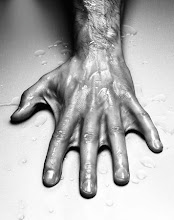What even is chocolate
To understand the best choc to use for tempering (i.e. for uses such as moulding, certain kinds of decor, coating and so on) it's worth thinking about what goes into it. Once cocoa beans have been fermented, dried, toasted, hulled and ground you end up with pure cacao which is about 50% cocoa solids and 50% cocoa butter.
Patissiers use pure cacao for flavouring and colouring creams and icing (e.g. for eclairs) since it has both flavour and colour in abundance. However, pure cacao is also very, very bitter. You'd need to be a bit of a nut to eat it.
Incidentally, if you press the pure cacao you can separate it into coca butter and cocoa solids (which can be ground into cocoa powder).
To make the pure cacao more palatable it is sweetened and fat is added (=dark chocolate). Pop in some milk powder or condensed milk and you get your milk chocolate. Take just cocoa butter and add milk powder and sugar and you end up with white chocolate.
Good quality chocolate
For some reason, word on the street is that a high content of cocoa solids means a good quality chocolate. This is what I had always thought. It is true in part but there is another factor.
Because cocoa butter is a prized commodity, particularly in the pharmaceutical industry (notably for the manufacture of suppositories - think about it), many chocolate manufacturers choose to replace some of the cocoa butter in their chocolate with other fats like vegetable oil.
Naturally, this affects the properties of the chocolate. The alternative fats can make the chocolate waxy or greasy, alter the taste and prevent it from being well tempered.
So a good quality chocolate, for patisserie/cooking, may have a high quantity of cocoa solids (mainly a function of taste) but should definitely have a high quantity of cocoa butter.
Couverture
The kind of chocolate used by chocolatiers and patissiers is called couverture. Couverture has a particularly high quantity of cocoa butter and no veg fat. The high cocoa butter means it can be tempered very well. It also means the chocolate is very liquid at a low temperature. It flows well which makes it ideal for moulding and covering. Melt a Dairy Milk and you'll have something rather more stodgy.
SEEDING CHOCOLATE - a second method of tempering
Seeding chocolate takes much less space than tabling but is a similarly efficient way of going about the mission.
What you do
Melt 3/4 or so of your couverture. While stirring, add the other 1/4 bit by bit (make sure it is well chopped up or use couverture drops) until the chocolate added only just melts into the mixture. Ready.
How this process tempers the chocolate (assuming the basic theory here is clear)
When chocolate comes from the manufacturer it is already properly tempered, a property which can be used to advantage. The aim is, first, to get your chocolate into a liquid state. Melting most of the couverture at 40-45°C makes sure it is well out of the range in which unwanted crystals risk forming. In adding the solid chocolate, you are putting beta seed crystals back into the mix. These will be the seed crystals which will ensure the chocolate crystallizes as wanted (as when tabling).
If the added chocolate melts quickly, this indicates that the temperature of the molten chocolate is high and it is probable that the seed crystals will have completely dissolved. As more solid chocolate is added and melts, the temperature of the mass drops. Once the added chocolate is barely melting, this indicates that the temperature is around 34°C at which the beta crystals can coexist with the chocolate in liquid form (like ice in water at 0°C). With these seed crystals in place the chocolate can then be used.



No comments:
Post a Comment